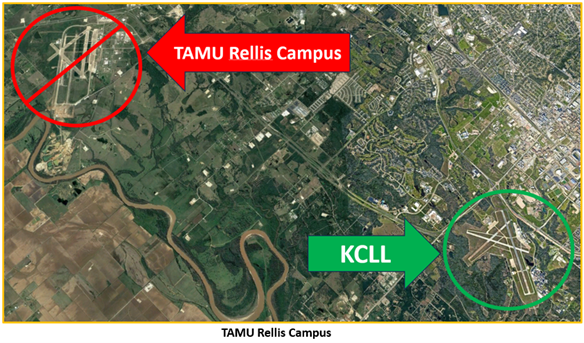Easterwood Field Airport (CLL)
Easterwood Field Airport (CLL) is a medium sized multi-use airport located just southwest of the city of College Station, Texas. During college football season, it becomes a very busy airport due to its proximity to Texas A&M University. This activity usually generates a Temporary Flight Restriction (TFR) around the stadium, located less than two miles northeast of the airport. Check NOTAMs, especially if you plan to visit during the football season. CLL serves the air carrier, corporate, business, military, and general aviation communities. Flight schools, that provide training from pre-solo to advanced ratings, and several flying clubs are located on the field. This mix of pilot experience and aircraft capability makes CLL an interesting place to fly and work. View a printable Pilot Handbook of the CLL information found on this Web page.
Know Before You Go
CLL Tower Hours of Operation 0800L-2100L
Administrative Office Open 0800L to 1700L M-F
Business Phone 979-775-9900
The airport configuration consists of intersecting RWYs designated RWY 11/29 and RWY 17/35. General Aviation services are primarily located on the east side of the airfield.
Though still visible at CLL, decommissioned RWY 4/22 and some associated TWY’s are marked with a series of Xs on the surface areas and on the Airport Diagram.
The airspace at CLL is Class D. (Refer to Sectional Chart)
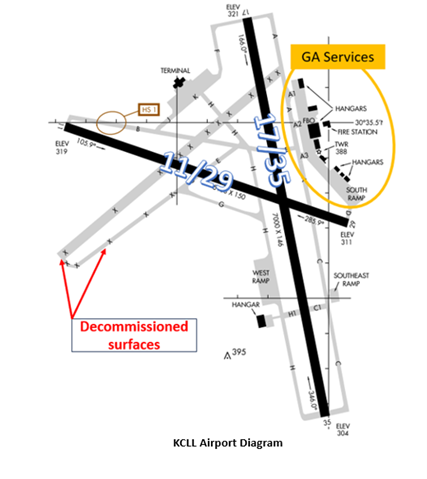
Below find various CLL-specific information and things to be aware of, as well as general information to inform your preflight planning. This will be reviewed quarterly and updated as needed. This information is to supplement the From the Flight Deck Videos that are produced by the FAA Runway Safety Group. Here you will also find information provided by the local air traffic controllers at the airport where you intend to fly. The information is subject to change. Not for navigation or legal* pre-flight action. Always refer to official pre-flight materials such as, but not limited to, NOTAMs, airport diagrams, VFR charts and airport construction notices for the latest airport-specific details.
Hot Spots
- HS 1 RWY holding position markings non typical location. Pilots sometime incorrectly cross the holding position markings on TWY B when taxied to RWY 11.
- Pilots have failed to recognize that the hold short line is located further back on TWY B and have and entered the Runway Safety Area for RWY 11.
- Pilots need to maintain heightened situational awareness when taxiing to RWY 11.
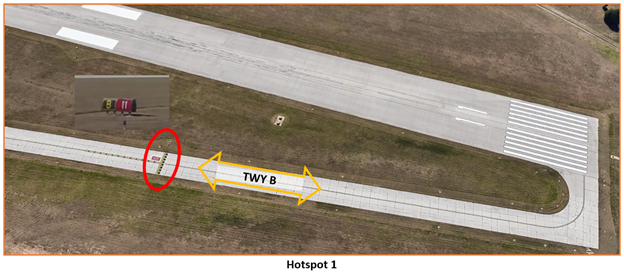
Wrong Surface Landing Risk
- The risk of landing on decommissioned RWY 4 exists at CLL.
- In the past, pilots have landed or attempted to land on this surface.
- This surface is unlit, marked with a series of X’s and does not have any associated instrument approaches.
- Loading an instrument approach to the assigned RWY will help pilots ensure they are lined up for the proper surface.
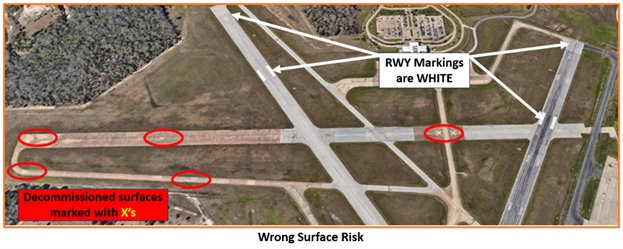
Surface Risk – Movement Area Cautions
- After landing on RWY 35, pilots exiting at TWY C1 or TWY B sometimes stop short of the RWY Hold Short Line.
- When exiting the RWY, taxi without delay to cross the hold short line for the RWY behind you. Your aircraft is not clear until it is completely across this line.
- A delay in completely exiting the RWY can cause aircraft landing behind you to go around.
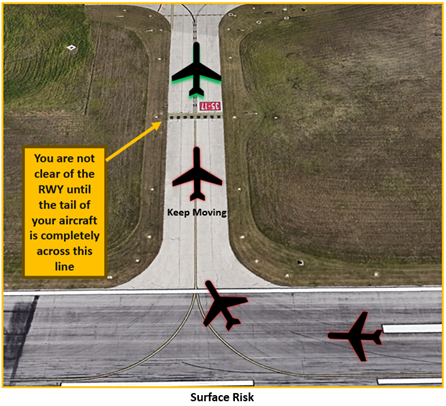
Additional Cautions
- Aircraft on the South Ramp assigned RWY 29 for departure need to be aware of the RWY Hold Short Marking at TWY D/RWY 29.
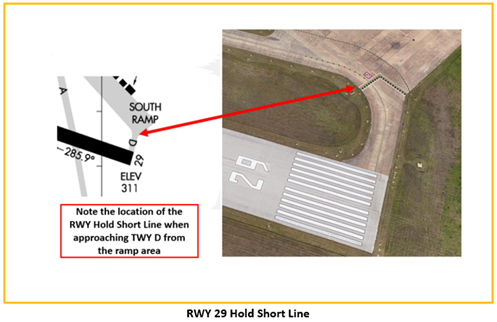
- There is a large firefighting school situated on the eastern edge of the airport. Controlled fires for student firefighters are commonplace and often produce large plumes of smoke.
- The airport beacon for CLL has been reported as hard to locate due to the surrounding lights from the city and the college.
General
- State your intentions on initial call with callsign, ATIS, position, altitude, and request.
- Line Up and Wait (LUAW) is not authorized at CLL.
Traffic Patterns
- TWR will assign Left or Right Traffic pattern depending on volume and workload.
- When in the traffic pattern, the TWR will extend upwind/downwind as necessary.
- GA pattern altitude 1300 MSL; Mil pattern altitude 1800 MSL.
- No VFR traffic patterns during home football gamedays.
Ground Control
- Listen to ATIS prior to contacting Ground Control. State current ATIS code or state you have the numbers. Readback all hold short instructions to include RWY assignment with callsign.
RWY Crossings
- Please read back all RWY crossing and hold short instructions with your callsign included in the same transmission.
Takeoff/Departure
- Pay attention to departure instructions.
- Take-off clearance will be issued from the hold short line since CLL does not use Line Up and Wait (LUAW).
Arrival/Landing
- When inbound to CLL, DO NOT set yourself up on final to any RWY expecting a straight-in approach. Many times, there are faster aircraft being controlled by Houston Approach Control inbound.
- Houston Approach Control handles ALL instrument practice approaches regardless of whether you are VFR or IFR.
- Review NOTAMS for the Letter to Airmen (LTA) for more information.
Additional Information
- Bird hazards (buzzards) on the south end of the field daily.
- CLL has limited parking space.
- If arriving from the west, do not confuse TAMU Rellis campus (closed airport 8NW) for CLL. Rellis has a similar RWY configuration. (See illustration below)
